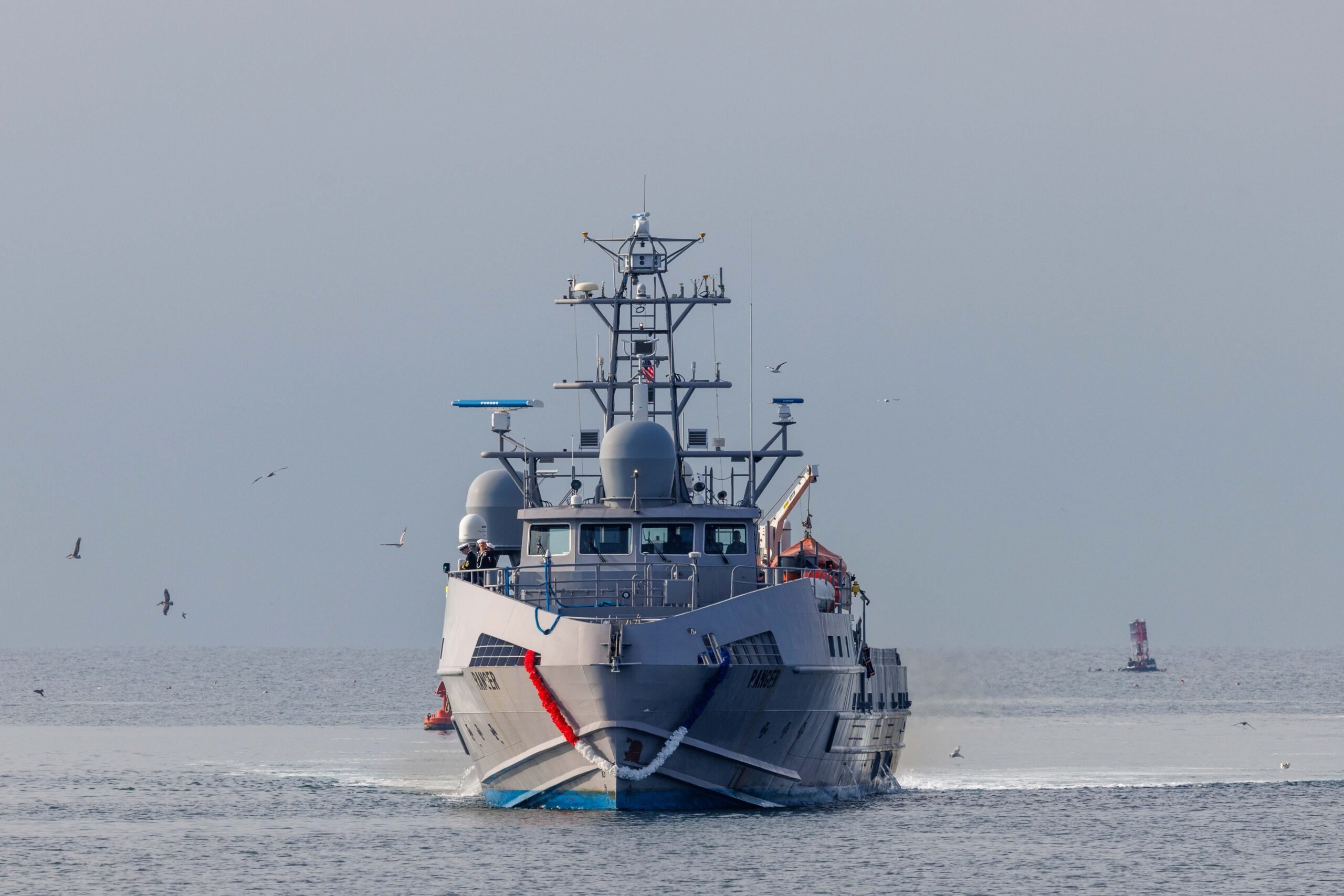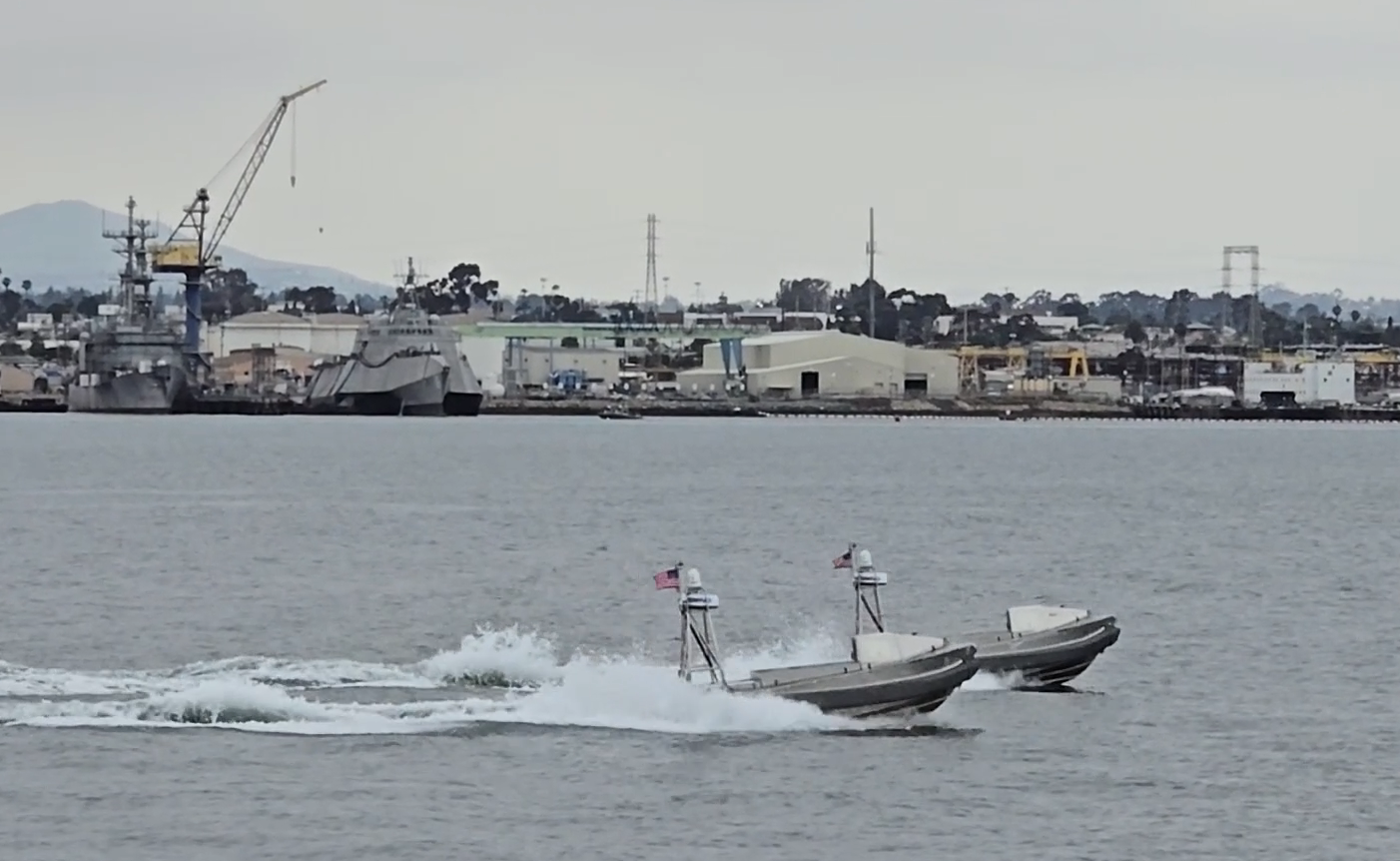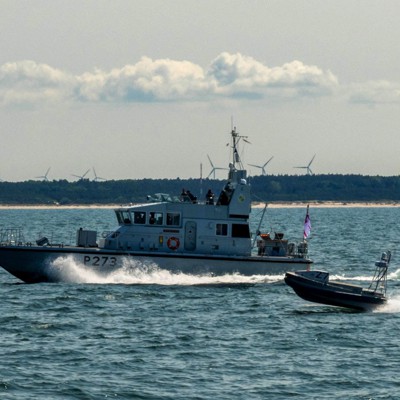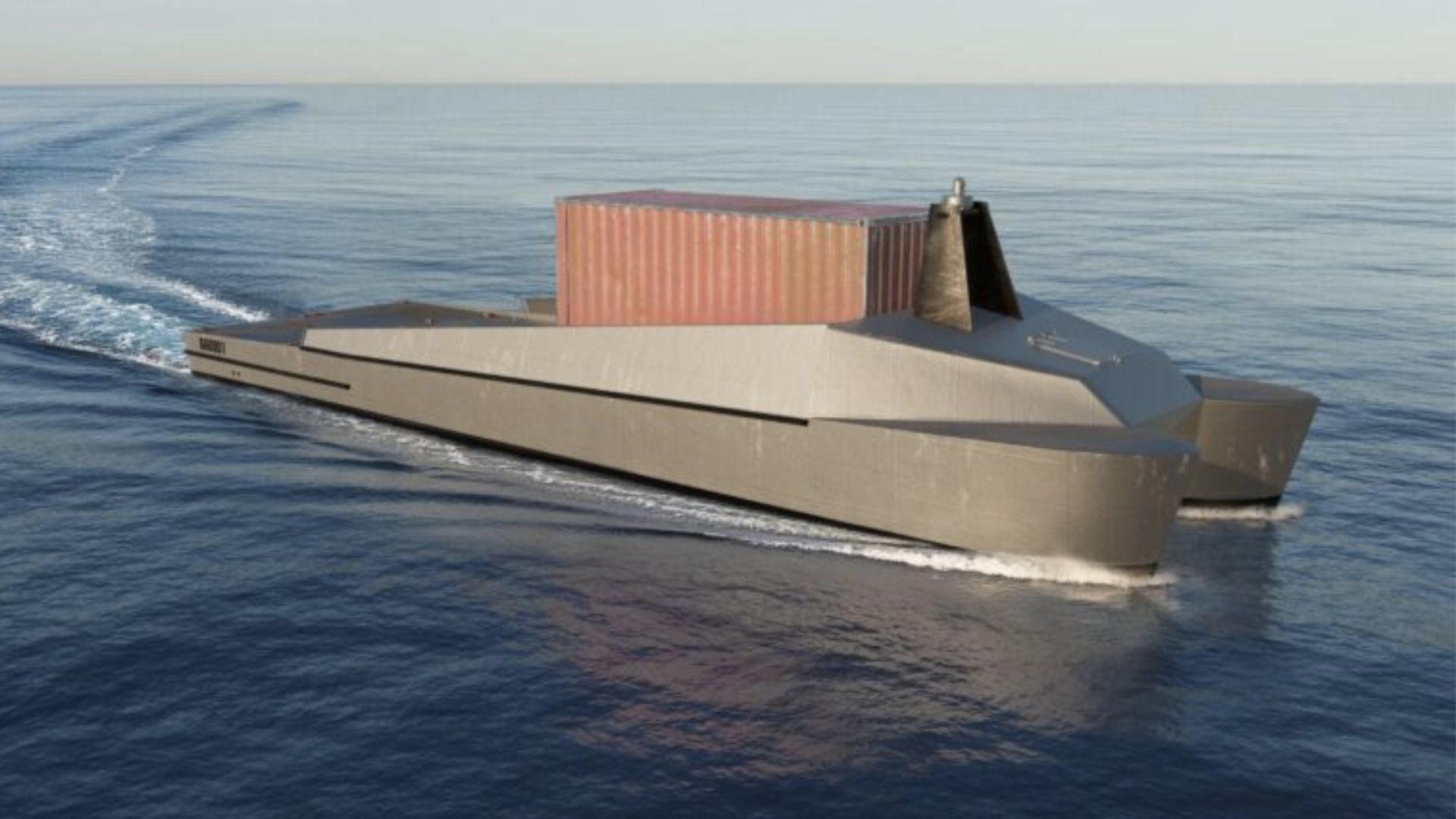How many drones does it take to replace a destroyer?
Fresh off a summer of testing robotic boats, the Navy's Task Force 66 wants to turn lessons into metrics.
By Lauren C. Williams
Senior Editor
August 27, 2025 07:42 PM ET
Could a flotilla of robot boats do the same job as a U.S. Navy destroyer? A task force commander has a theory.
“We have a thesis in TF66 we call the ‘deconstructed DDG,” said
Rear Adm. Michael Mattis, who leads an effort to figure out how low-cost, commercially available uncrewed systems might fit into the Navy’s
Sixth Fleet.
“We think that with 20 USVs of different, heterogeneous types, we could deconstruct a mission that a DDG could do. And we think we could do it at a cost point of essentially 1/30 of what a DDG would cost.”
Now, Mattis needs to prove it to his leaders at U.S. Naval Forces Europe/Africa, he told an audience at the National Defense Industrial Association’s emerging tech conference on Wednesday.
“I need to be able to show the ROI on that. I need to be able to show the resilience of that system, being able to perform. And I need to be able to show that it's okay to attrit that capability and then be able to quickly regenerate another one, another one. And that comes back down to really understanding these numbers in this data and having confidence that these are real capabilities able to deliver real effects that we've rehearsed and proven.”
With a
keen eye on the war in Ukraine, Mattis’ task force spent the summer testing uncrewed systems in joint and multinational exercises. The group joined the Army’s
Second Multidomain Task Force in
Arcane Thunder and NATO partners in the annual
BALTOPS maritime exercise. The TF66 team is also working with NATO’s
Task Force X on domain awareness.
“It turns out that
the Baltic is a pretty caustic environment as well. Similar to the Eastern Med or the Black Sea,
we saw a bit of jamming and spoofing going on…We were able to see sort of the challenges operating through that electromagnetic spectrum,” Mattis said.
During BALTOPS, which ended in June, the task force worked with the Royal Navy, commanding uncrewed systems from a patrol boat within line of sight for scouting tasks. They also tested USVs for contested logistics with the Polish Special Forces and the Army during BALTOPS and Arcane Thunder respectively.
“We used 10 of our USVs that have pretty good range—they're slower speed, but they have good ability to carry a couple hundred pounds of a payload. So, whether it be ammunition, food…we worked with both the Polish SOF and the U.S. Army to put those boats in the water and then essentially see what it would take to get him through a barrier and have him go to another beach where he might have
an isolated force that's looking to be sustained,” Mattis said. “And then finally,
we pivoted from BALTOPS to the Task Force X,
true maritime demand awareness task…the data interoperability and passing them our video feeds, passing them our data locations, and then figuring out what we could do around identifying targets…and monitoring threats.”
An overall goal for Task Force 66 is to experiment with formations to determine what is needed to put a robotic flotilla on par with traditional manned platforms.
“We generally have multi-domain or multi-mission ships…But
we don't necessarily have ships that can do [effects] everywhere, all the time, everything. So the idea, then, is, how do I take an exquisite capability like a destroyer, outsource maybe one mission set from that destroyer, maybe the maritime demand awareness, and then be able to characterize,
how do I maintain the persistence and capabilities of that ship to do that mission with a flotilla of unmanned things—which may include unmanned aerial vehicles, may include unmanned underwater vehicles, they would be networked together working through the space and cyber arenas to kind of pull their data together and generate a similar effect to what that destroyer might be doing,” Mattis told reporters.
Robotic and autonomous systems would act as part of a “hedge force” that could be used to deter adversaries when there aren’t enough traditional capabilities to do it and deliver the same effects.
For example, for maritime domain awareness in the Gulf of Guinea, “I need some sort of persistent presence there. I'm not going to try and flood the zone with 1,000 drones,” Mattis said. “That flotilla has to be out there for an amount of time. And we have some USVs that can persist, for example, for six months straight. I could just leave them out there. But if I'm generating an effect somewhere else—a different effect—maybe I may need to cycle the boats back and forth. And so then I've got to figure out what is my rotation. If I have a destroyer out there, I have to refuel it, and I have to have it go do other mission sets and other things. So we don't have a framework to figure that out right now.”
Eventually, the lessons of TF66 could be combined with those of
Task Force 59—the Navy's original drone task force, run by Naval Forces Central Command—and 4th Fleet’s own, more integrated
efforts. But for now, Mattis is focused on proof in the data.
“I am trying to create more transparency to my leadership and to the leadership in the US Navy around the performance and capabilities of our systems to meet their expected concepts and operations every time I put my systems to sea,” he said. “I want to be able to take those telemetry feeds down to the component level and be and—based on outcomes, based metrics—be able to articulate whether I've met an outcome or not, and be able to isolate that to a failed component or a working system. And I want to be totally ruthlessly transparent with that, with my leadership all the way up to the
chief of naval operations, who would love to have a dashboard that he would look at. He's a data driven leader, and that's where we need to go, where we've been challenged.”









